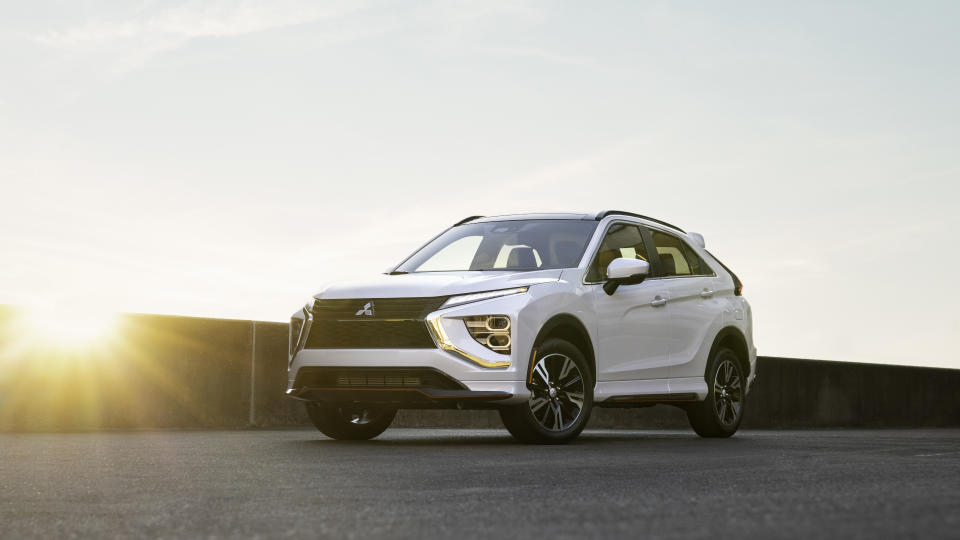5 Japanese Cars To Stay Away From Buying

Japanese cars have earned and maintained a well-deserved reputation for reliability and affordability. For instance, the 2023 Toyota RAV4 was the fourth bestselling car of 2023, according to Car & Driver. It falls behind American classics like the number one Ford F-Series pickup trucks, the Chevy Silverado, and the Dodge Ram pickup, all exemplifying Americans’ love for pickup trucks.
Read Here: 10 New Cars to Avoid Buying in 2024
Learn More: How To Get $340 Per Year in Cash Back on Gas and Other Things You Already Buy
Regarding sedans, the Toyota Camry is second only to the Tesla Model Y on the list of bestselling vehicles. The Toyota Tacoma and Corolla and several Nissan and Honda models also made the list. But not every Japanese car is a winner.
In fact, Japanese manufacturers, including Honda and Toyota, have had some duds over the decades. You might want to avoid these models if you’re shopping for a classic Japanese car that will hold its value while delivering performance, comfort, and style.
Sponsored: Credit card debt keeping you up at night? Find out if you can reduce your debt with these 3 steps
Mazda RX-8
The first-generation Mazda RX-8 was sold from 2004 to 2008. It had a 4-cylinder engine that wasn’t winning any races with 212 HP. But worse than that, it ranks just 11th in reliability out of 19 Mazda models evaluated by MadzaProblems.com. The site reveals complaints about engineer failure, power steering jerks, excessive oil consumption, and numerous recalls over the years.
Consider Also: Avoid Buying These 5 Cars: Get These Similar (and Often Cheaper) Models Instead
Mitsubishi Eclipse
The Mitsubishi Eclipse is a sporty little car with great gas mileage and decent handling. If you’re buying one of the older models today, you can snag it for just around $3,000, according to Kelley Blue Book. But models made between 1999 and 2003, and again in 2007, seem to be plagued with problems, according to MitsubishiEclipseMA.com.
The rims and wheels tend to become damaged easily or suffer wear and tear over the years, which can make this car look worn out before its time. The tires also wear out more quickly than some models of vehicles. The interior tends to be cheaply made, which means parts can break. Finally, drivers reported trouble with the automatic transmission, power train, and steering on the 1999 model, in particular.
Honda CRX Del Sol
Honda remains a trusted Japanese brand today, with the Honda Civic and Honda Accord sedans making Car & Driver’s list of bestselling cars for 2023. However, the Honda CRX Del Sol, designed to replace the beloved Honda CR-X in 1992, was nothing better than “terribly disappointing,” according to HotCars.com.
The roof leaked. The cabin was noisy. And front brake rotors tended to warp. Far from the sporty coupe of its namesake, the Honda CRX, it seemed to be nothing short of a lemon. Honda no longer makes a car equivalent to the Del Sol.
The sportiest model you’ll find in the Honda line today is the two-door version of the Civic Si, with late-model used versions going for around $20,000 and worth every penny, considering that Hondas tend to hold their value.
Toyota Paseo
We wouldn’t blame you if you read “Toyota Paseo” and said, “Toyota – what?”. While other Toyotas, like the Camry, Tacoma, RAV4, and even the Prius – one of the first hybrid cars to gain mainstream popularity – are household names, the Paseo was barely a blip in the 1990s.
Manufactured from 1991 to 1997, the sub-compact car could have captured more market attention or love from Toyota fans despite being built on the Corolla frame. The car came in a controvertible and regular model. Today, these vehicles go for thousands in excellent condition.
It’s not so much that the Paseo is a bad car. It’s not plagued with mechanical problems like others on this list; it just failed to capture the hearts of ’90s drivers, so Toyota discontinued it quickly. As such, if you pick one up to restore, with so few available in the U.S., it could be hard to find parts.
Suzuki Samurai and Suzuki X-90
The ’90s was a rough decade for Japanese auto manufacturers. Suzuki launched the Suzuki Samurai SUV with boxy lines reminiscent of the Jeep Wrangler. But the car was given a safety rating of “not acceptable” by Consumer Reports, according to SlashGear.com. It was prone to flipping during sharp maneuvers.
Likewise, the Suzuki X-90 successor had a similar problem of tipping over. However, unlike the Samurai, which had an appealing style, the two-seater X-90 had a weird design. Suzuki was curious to know if it was a coupe, a sports car, or the front half of a pickup truck. It boasted only 90 horsepower and, ultimately, crawled into oblivion, along with the Samurai, as one of the worst Japanese cars ever made.
More From GOBankingRates
This article originally appeared on GOBankingRates.com: 5 Japanese Cars To Stay Away From Buying
